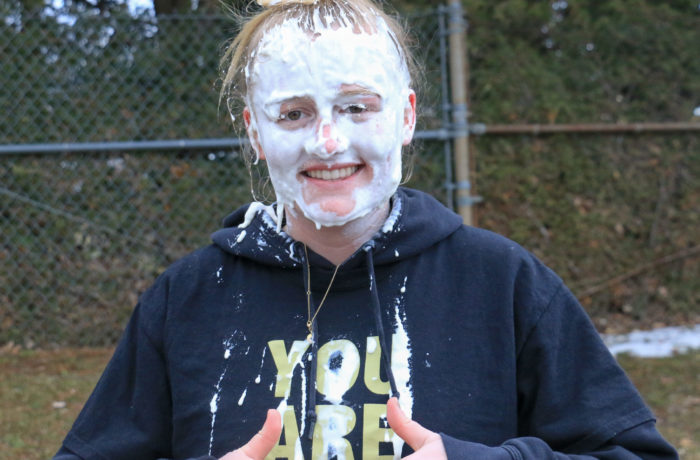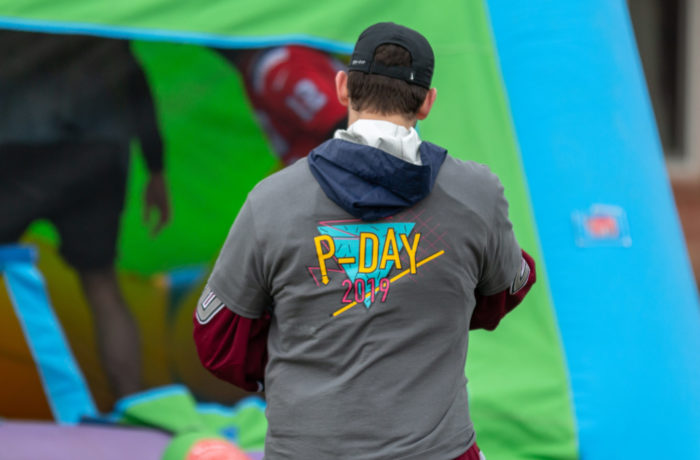In an unexpected shift, the vice president of the office of institutional advancement, Richard Daniel, resigned on Oct. 9. The VP of institutional advancement (IA) leads the offices of annual giving, individual giving, alumni and family relations, foundation relations and sponsored programs, advancement services, and as of recently career services, all residing together in Prevel Hall and the Pomerleau Alumni Center across the street from Jeanmarie Hall.
Daniel’s resignation came as a surprise to the IA staff. Jerry Flanagan, who has worked with the college for nearly 45 years, will take the position in an interim arrangement.
Daniel interviewed for a presidential position at Eastern Arizona College on Sept. 29, according to the Eastern Arizona Courier. It is unclear whether or not Daniel’s trip to Arizona influenced his resignation. Attempts to reach Daniel were unsuccessful and President John J. Neuhauser did not comment on the information.
By mid-March each year, the college exhausts the money students pay for tuition and housing. The rest of the fiscal year (ending on June 30) is supported through funds raised by IA. The office strives to develop lifelong relationships with alumni, parents, and friends of the college, hoping to engage them as volunteers and benefactors, according to the office’s mission statement. Last year, the office raised $3.39 million. This year IA’s revenue goal is $3.35 million, 1.88 million of which they hope to designate to the Highest Priority Fund, which is directed to wherever the college needs it most (typically financial aid and scholarships).
As the Defender noted in September, the college continues to face significant financial challenges due to the drop in incoming class size, and a $1.5 million deficit as of 2016. As tuition from students decreases, the college relies on the generosity of alumni, parents, and friends of the college, all of which support the college through the office of IA.
Daniel began as VP in August 2016 and implemented numerous fundraising and recruitment projects to keep the financial state of the college afloat. He enacted the merger between the career development and alumni relations offices, forming the Career Education and Alumni Engagement Center (CEAEC). This program directs its relationships with alumni to benefit students’ budding careers. In joining the two offices, alumni can offer advice, internships, and training to students aspiring to their field. The office hopes that this program will pique the interest of prospective students as well.
According to Jen Conetta, director of annual giving, Daniel focused on bringing new technology to the office, freeing up the very tight staff to expand to other tasks. For example, Daniel was instrumental in transforming the office’s phonathon from a paper to an automated system, catching the office up to the methods used by larger universities. This upgrade eliminated multiple tedious tasks which the staff had to complete to process donations from alumni and professionalized the phonathon job, making it more beneficial for the student staff.
“Richard was a really great leader. We had been fairly siloed and while everyone was really doing their job, and doing their job well, I think he taught our team to step out of our job descriptions and realize where we could help colleagues and colleagues could help us,” Conetta said. “I also think he was really great at building relationships around campus, where we had been hidden across the street. He was invested in us. I think to him his job was very much a lifestyle, so I think that he lived this.”
Conetta also said that while Daniel’s resignation was sudden, the office will be moving forward in the coming months due to the positive changes made in his time at the college, and also due to Flanagan stepping up as interim VP.
After graduating from St. Michael’s in 1971, Flanagan returned in 1973 working as an assistant dean and was later appointed director of admissions which he maintained for 30 years. He began work in institutional advancement in 2013, and “officially retired” in December 2016. While he was no longer employed by the school at this time, he still maintained a desk in IA as a volunteer, coming into the office a few times a week to help with what he could and maintain many of the close alumni relationships he had fostered over the decades.
Upon learning of Daniel’s resignation, many members of the office vouched to invite Jerry to act as interim since he knew the office so well and worked closely with Richard, Conetta said.
“I’m not coming back to work full time, and I wouldn’t take this position anywhere else but St. Michael’s College. But, I said if I can help in this transition period I’d be happy to do it and the staff seemed pretty excited about it, and my wife agreed with a couple of caveats, such as still spending time in Florida,” Flanagan said.
The college has been Flanagan’s life for over 50 years. “It’s just part of who I am. It’s faith, family, and St. Michael’s and in that order.”
President Neuhauser has worked with Flanagan throughout the entirety of his time at the college, and is unconcerned about the progress of the office in the coming months. “Richard Daniel was new to the position, so in a sense Jerry has much more, long standing relationships with alumni and donors than Richard would have had. So in some sense I think Jerry could do just fine in this position. He’s probably admitted 80 percent of all the alumni out there.”
“I worked with Richard and liked him. I was excited when he came. For me at this point I’m still gathering information on new things such as the CEAEC. I’m not trying to make huge decisions, I’m just trying to keep us steady but moving forward and I think things were moving a pretty good direction,” Flanagan said.
Flanagan originally agreed to hold the position for three months, but is aware that the permanent position could remain open for as long as a year. An active search for a permanent VP will not commence until a new president takes office, according to President Neuhauser. If the eventual search took longer than Flanagan would like, the college would again bring on another interim with experience, perhaps another alumnus for no longer than a year, Neuhauser said.
While the institutional advancement may be hidden from main campus, their work is present throughout, covering the costs that tuition alone cannot. “We need to engage alumni and families to help us on the career side and to give back. We need to increase participation and bring in more dollars. These are all things we can do once we are fully staffed, and I think Richard brought lots of new blood and new ideas. It did shake things up in a good way that he was here and he brought bigger university experience that we can adapt,” Conetta said.
President Neuhauser still has his eyes set on the importance of tuition revenue. “[VP of IA] is obviously an important position because we get a considerable amount of funding which mainly goes for scholarships and things, but it pales by comparison to the importance of admissions,” he said. As this year’s first year incoming class size was 10 percent smaller than last year’s–therefore, 10 percent less revenue from tuition.
“We talk about being this tight knit family and it’s our job to continue that after people graduate. So I think the most difficult thing [for us] is empowering everyone to do their part to make our community work. Everyone has to take ownership over their piece of it and realize that that’s what makes St. Mike’s special,” Conetta said.
“We have some challenges. But the only way we are going to overcome those challenges is to work together toward the goal of making St. Michael’s the best place we can, so that years from now when you’re looking for jobs they’ll say, ‘She’s a St. Michael’s grad–that’s a great place,” Flanagan said.


